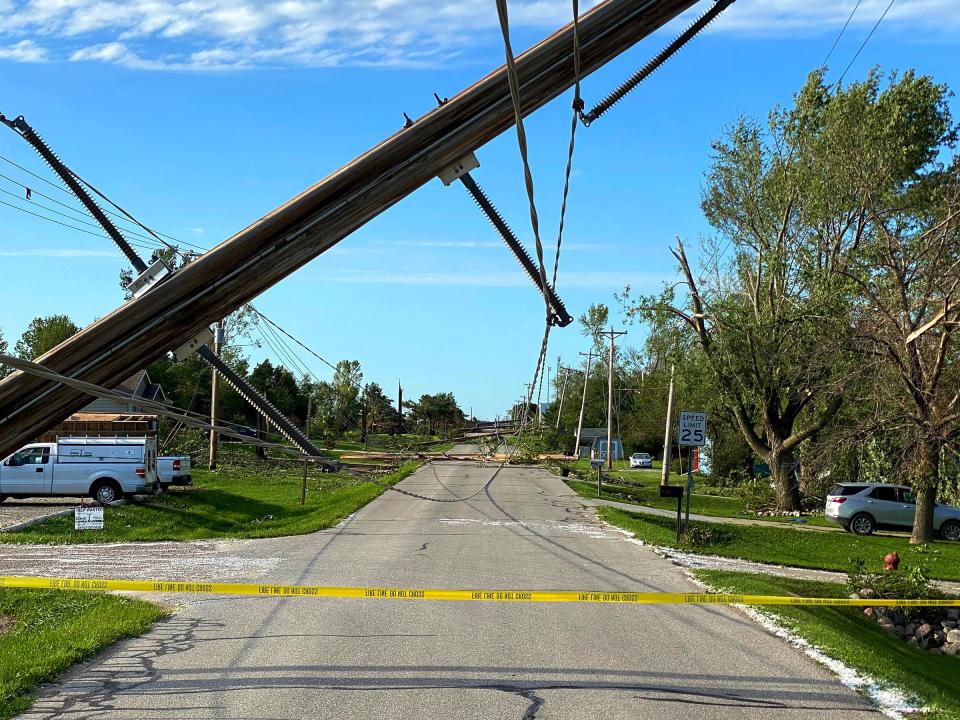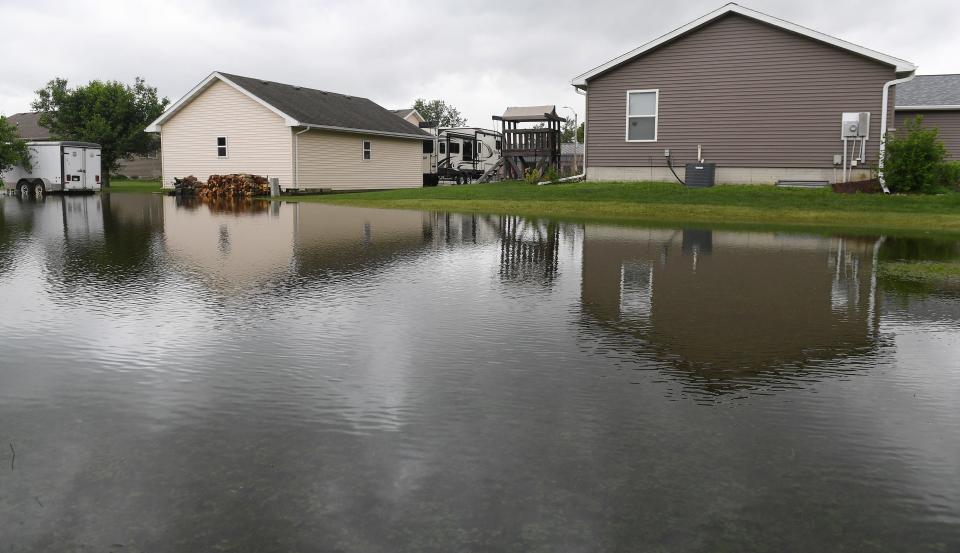Story County works on updated Hazard Mitigation Plan to protect against natural disasters
Story County officials hope to better protect its residents and infrastructure from natural disasters as they work through the latest Hazard Mitigation Plan.
State, tribal, and local governments are federally required to adopt a new plan every five years in order to receive grant money.
In developing the five-year plan, Story County Emergency Management Coordinator Melissa Spencer said the county looks at all the manmade and national disasters that could impact the county. Jurisdictions, school districts and non-profits are all invited to contribute as well.
"We look at a combination of things from past disasters that have impacted Story County, like flooding, tornadoes, winter weather and human disease," Spencer said. "Each jurisdiction and each school district look at what are the greatest risks individually to their own community, because not everybody in Story County floods and schools may have some higher priorities than the communities do because they just don't experience the same impact from disasters and emergency."
Spencer said the planning process has been open to the public since March 2023. The plan was available for comment until Tuesday, March 5, 2024. The county will now make adjustments based on community requests or public comments.
Iowa Homeland Security and Emergency Management will eventually review the plan and then the Federal Emergency Management Authority.
Story County's goal is for each jurisdiction to adopt the updated plan by May, which will extend through 2029.
More: The Ames council has approved a new tax abatement program to help improve a housing shortage

Why is a hazard mitigation plan important?
Hazard mitigation starts with local and state governments identifying natural disaster risks and vulnerabilities common to their area. They then develop long-term strategies for protecting people and property from similar events, which is where a five-year plan comes into play.
According to FEMA, hazard mitigation planning "reduces loss of life and property by minimizing the impact of disasters." It also allows governments to apply for grants after a disaster or other hazardous event.
The goals for the 2024-29 Story County hazard mitigation plan are:
Protect lives and reduce injury
Minimize or reduce damage to property, especially critical facilities and infrastructure.
Strengthen communication among agencies and between agencies and the public regardinghazard mitigation
More: Gilbert's Anna Saltzman prevailed in a tight Ames Tribune of the Week vote
2020 Derecho inspires better recovery plan
Most of the impacts communities strategize for in Story County's mitigation plan are natural disasters. They are developing plans for weather hazards common to the Midwest, such as flooding, tornadoes, and winter weather.
Communities were inspired by the aftermath of the 2020 derecho that left more than a million customers without power. They realized they didn't have adequate backup power to keep their critical infrastructures running, Spencer said.
"Keeping the water running, keeping the city hall able to run so they can work through the impacts to their communities, there are more communities looking into that then we had five years ago," Spencer said. "It was the impact of the derecho that really brought that forward."
Many communities, including Ames, have added or plan to install backup power to critical facilities to the upcoming five-year plan. Ames' water wells are connected to one source of electricity, and in the event of an extended power outage, the safety of the drinking water supply could be threatened.
Ames' action in the plan calls for backup generators at the SAM pump station, Youth Sports Complex and North River Valley Well Field, with a total cost of almost $2.2 million. The plan is currently in progress, according to county documents.
More: Ames seeks affordable housing in latest 5-year Community Development Block Grant plan

Hazard plan is not 'set in stone'
Human disease is a higher priority for some Story County communities because of the COVID-19 pandemic, Spencer said.
Should an unexpected event like COVID-19 occur, changes can be made to the five-year plan. A community can ask to amend its mitigation plan for unexpected hazardous events.
"When we had the derecho come through, some communities did not have an action for backup power generation, and so we were able to send a request asking for that mitigation action to be added to the plan," Spencer said. "So we're not necessarily stuck for five years; there's a process that we can follow to request additions to the strategies or actions of the plan annually."
A draft of Story County's hazard mitigation plan and additional information can be viewed on the county's website.
Celia Brocker is a government, crime, political and education reporter for the Ames Tribune. She can be reached at CBrocker@gannett.com.
This article originally appeared on Ames Tribune: Story County must update Hazard Mitigation Plan for federal grants

